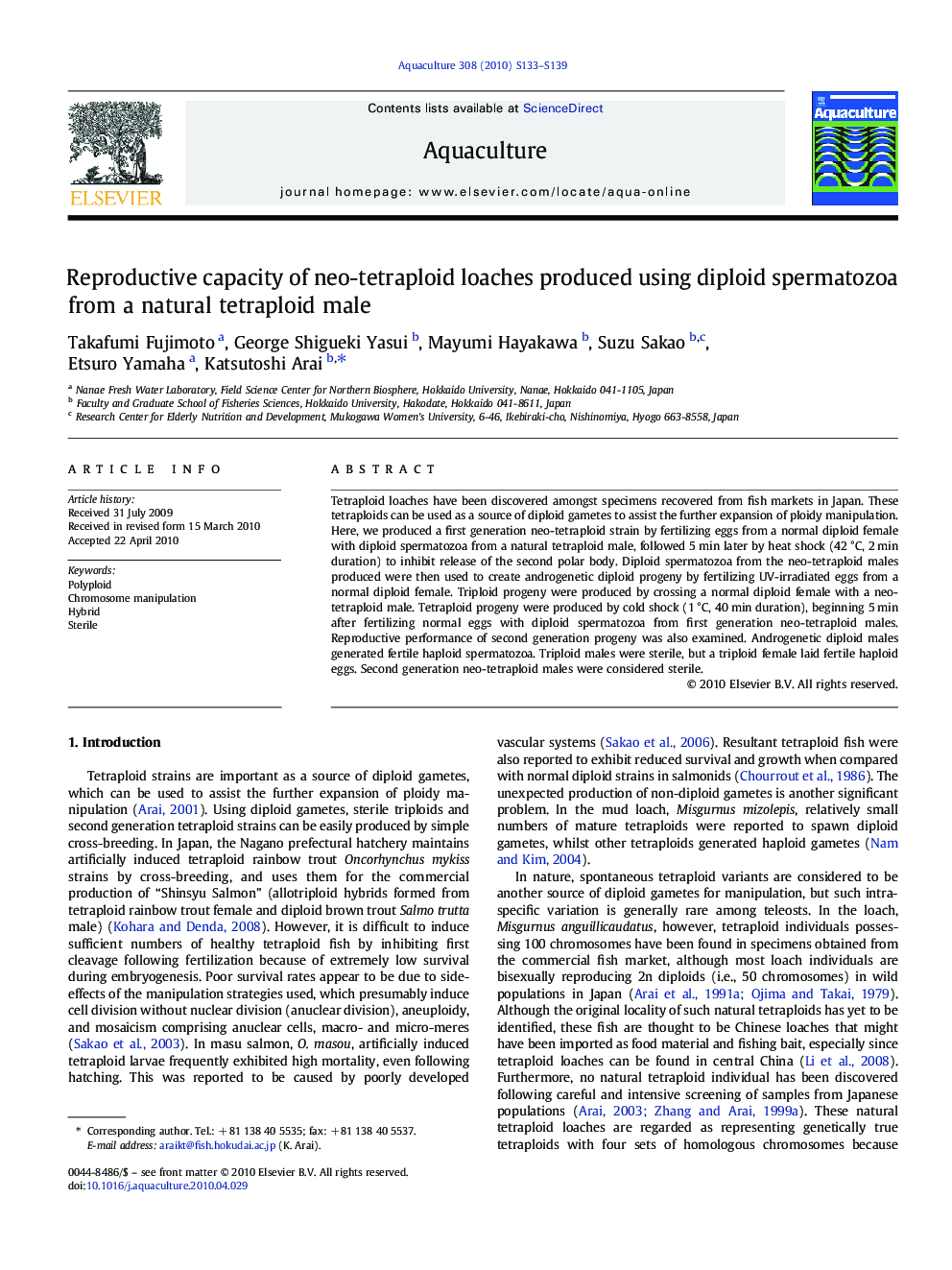| Article ID | Journal | Published Year | Pages | File Type |
|---|---|---|---|---|
| 2423386 | Aquaculture | 2010 | 7 Pages |
Tetraploid loaches have been discovered amongst specimens recovered from fish markets in Japan. These tetraploids can be used as a source of diploid gametes to assist the further expansion of ploidy manipulation. Here, we produced a first generation neo-tetraploid strain by fertilizing eggs from a normal diploid female with diploid spermatozoa from a natural tetraploid male, followed 5 min later by heat shock (42 °C, 2 min duration) to inhibit release of the second polar body. Diploid spermatozoa from the neo-tetraploid males produced were then used to create androgenetic diploid progeny by fertilizing UV-irradiated eggs from a normal diploid female. Triploid progeny were produced by crossing a normal diploid female with a neo-tetraploid male. Tetraploid progeny were produced by cold shock (1 °C, 40 min duration), beginning 5 min after fertilizing normal eggs with diploid spermatozoa from first generation neo-tetraploid males. Reproductive performance of second generation progeny was also examined. Androgenetic diploid males generated fertile haploid spermatozoa. Triploid males were sterile, but a triploid female laid fertile haploid eggs. Second generation neo-tetraploid males were considered sterile.
